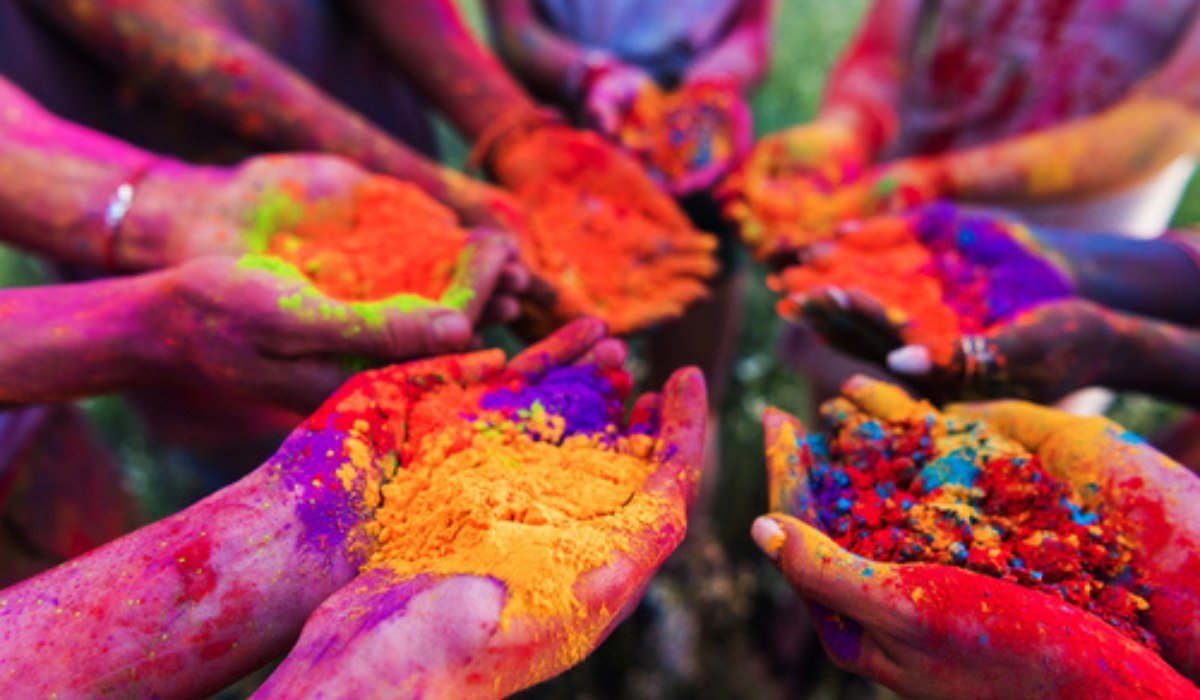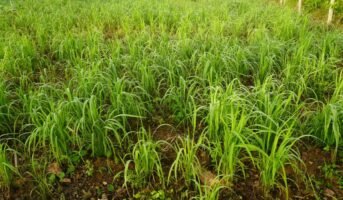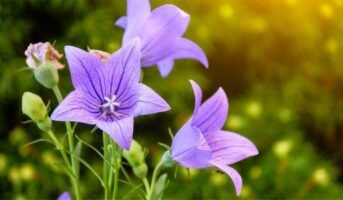Holi, the celebration of colours, is almost approaching. Every year, Indians celebrate Holi with great delight and zeal. Holi will be observed on March 25 this year. Holi is played using water, gulal, and readily accessible synthetic colours from the market. But have you ever considered how damaging these artificial colours are to your skin?
Such colours are harsh on the skin, resulting in allergies, burns, rashes, and other concerns. You can play Holi without worrying since we can give you a solution. Only Homemade Holi colours or organic colours made from items found around the house or in nature can ensure that you play Holi without endangering your skin. The increasing demand for natural colours that are easy to make at home has resulted from this. Read this article to learn how to make Holi colours at home.

Source: Pinterest
How to make organic Holi colours at home?
Does the idea that you can make any colour as brilliant as what they sell at home seem appealing? Here are some of the brightest and most popular colours people like to play with. This Holi, you can use as much colour as you like; it won’t hurt you, and it won’t run out. Here are the methods for making any organic colour for Holi.
Yellow
Making yellow at home can be done in two different methods. You can find any yellow flower from your garden, like a marigold or combine turmeric with flour. You can combine either of the two ingredients—turmeric or dried flower powder—in the ratio of choice based on the level of darkness or lightness you desire. Dry the flower and then crush it to make a very fine powder. Holi powder that is both natural and homemade is ready.
To achieve a yellow colour, mix equal parts of cornflour with turmeric. The mixture should be thoroughly combined by rubbing it between your palms. The mixture can then be sieved through a strainer two to three times to get a fine texture. Boiling the raw haldi in water will produce a wet version of the same colour, ready for use after it has cooled.
To make wet yellow colours, add turmeric to water or boil marigolds in water. To get better colouring, make sure the turmeric is organic.
For last-minute preparations, you can also use chandan (sandalwood) powder to achieve a somewhat orangish yellow colour or chandan paste, which you can produce at home by mixing chandan powder with water or rose water. Add a pinch of haldi for a more vivid yellow colour. Remember to use haldi sparingly to avoid staining your skin and face. Stains left on your skin are slightly more difficult to remove (the yellow stain will be removed, leaving a yellowish tint) and even more difficult to remove from clothing.
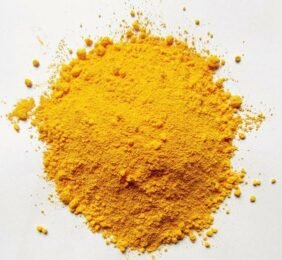
Source: Pinterest
Red
You may combine lemon juice and turmeric to create this lovely colour. Due to its acidic nature, lemon juice will make turmeric red. The mixture can then be dried in a well-ventilated area. Avoid placing the mixture in direct sunlight, as it will bleach the mixture.
You may make it home by combining some maida or atta with red sandalwood powder. Keep in mind not to use this colour with water. Beetroots and hibiscus flowers need to be boiled to create a wet variant. Mix in some tomato juice to make it less likely to stick to your face or other body parts.
Choose the red hibiscus blossoms, allow them to dry until crisp, and grind them in a blender until they resemble a very fine powder. You may make it home by combining rice flour and dried hibiscus powder. “Gulal” right from your own home. Then, to improve the quantity and quality of the colour, combine rice flour and red saffron in equal amounts.
To obtain a red, wet colour, boil pomegranate peels in water.
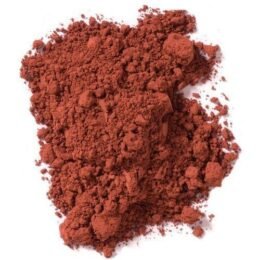
Source: Pinterest
Pink
You can use the same procedures that you used to create the red colour. Just use a little less lemon juice.
Squeeze the juice from the freshly grated beetroot by taking it in a cloth. Combine rose water, cornflour, and beet juice. Stir until the colour is uniform. It will now be spread out on a tray to dry. Gather, put through a fine sieve, and then use this lovely colour to play Holi with your loved ones.
Beetroot should be ground into a fine paste and allowed to dry in the sun to get a dry version of this colour. After drying, combine it with maida or besan and use it. Boil some beetroot slices and let them soak in water to make a wet version. You’ll also have a bright pink colour to play with.
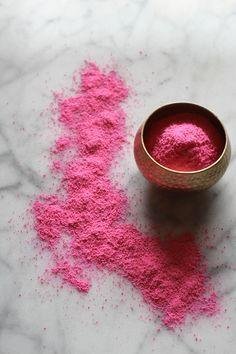
Source: Pinterest
Magenta
You can chop beetroot slices and boil them in water to create this distinctive colour at home. Red onions are another option. Before using, strain the water and let it cool.
Grate or slice one beet. For an exquisite magenta colour, soak in one litre of water. For a deeper colour, boil or let sit overnight. Dilute. For an orangish-pink colour, boil 10 to 15 pink onion peels in half-litre of water. To get rid of the odour before usage, remove the peels. For a slightly pinkish colour, boil the pink variety of Kachnar (Bauhinia variegata) blooms or soak them in water overnight.
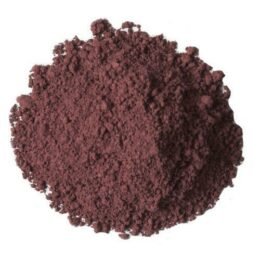
Source: Pinterest
Brown
To obtain a brown colour, you can boil 200g of coffee, tea, or the leaves of these plants in water. To eliminate the smell of these ingredients, you can mix rose water. But keep in mind that coffee water can also leave stains.
The kattha (Acacia catechu), consumed in a pan, becomes brown when combined with water. Therefore, you can also use kattha to obtain this particular colour.
Boiling dried Amla/Indian Gooseberry fruits in an iron vessel overnight will produce a darker shade that resembles a wet black colour. Use after diluting with water. You can now proceed after extracting the juice from the black grapes and diluting it with enough water to remove the stickiness.

Source: Pinterest
Purple
Black carrots can be powdered in a mixer and combined with corn flour. Your purple colour will be ready once it has dried. Rose water can be added as well for aroma.
Grapes and Jamun should be powdered in a grinder and combined with water to create a deep purple colour. Jamun is an excellent natural dye that gives off a stunning purplish colour.

Source: Pinterest
Blue
To create a stunning blue powder, jacaranda blossoms can be dried in the shade and then powdered. Jacaranda flowers that have been dried and crushed can be mixed with water to create wet colours.
To make blue gulaal, use rice flour and powdered blue hibiscus flower petals.
To achieve the appropriate colour intensity, crush the indigo plant’s berries (fruits). When the leaves of some indigo species are boiled in water, the resulting colour is a deep blue that can be used as a Holi colour.

Source: Pinterest
Grey
To obtain the grey colour, use the seeds of Indian gooseberry or amla. Use the dry powder without any hesitation afterwards by combining it with corn flour.
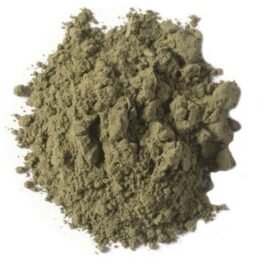
Source: Pinterest
Green
Combine maida or rice flour with henna powder for a dry green colour. To create wet colours, combine them with water. Always use henna cautiously because it can stain your clothes and skin when mixed with water. Use pure mehendi; do not use the one with mixed amla (intended for use on our hair), which is brown and may leave stains on your skin and clothes. Dry mehendi won’t colour your face because it can be easily removed. Only when it is a paste or when it has been combined with water will it produce a faint stain. Thus, it can be used as a pucca/fast colour.
A spinach and coriander leaf mixture can also create a wet green colour. They should be boiled before being finely ground into a paste.
For green colour, dry and finely powder the Gulmohar (Delonix regia) tree leaves. To create a natural, safe green colour for Holi, crush some tender leaves of the wheat plant.
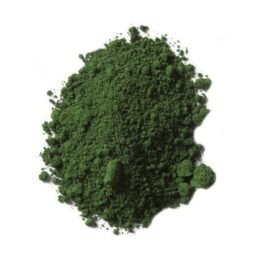
Source: Pinterest
Orange
You’ll need a well-known flower called the Flame of the Forest to make an orange. Make a fine powder out of the dried petals. Add flour now and thoroughly combine. Alternatively, you can make your wet colour by soaking saffron in water to make it wet. Gende ka phool (marigold) from your garden can create a safe and natural substitute. All you have to do is take a good number of blooms from your garden. Keep the flowers in direct sunshine until they are dried. Be careful that the petals won’t scorch. Your orange gulal will be prepared by grinding the dried flower petals in the next step until they are reduced to a fine powder. For the desired colour and quantity, add cornflour, flour, or rice flour to the prepared mixture.
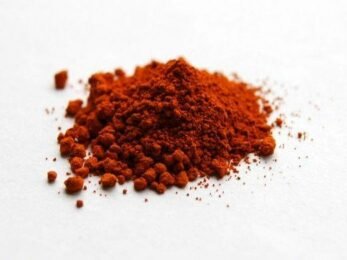
Source: Pinterest
Saffron
Arrange a Tesu flower and soak it overnight to create this colour. This flower creates a wet colour, producing a lovely, deep saffron hue.

Source: Pinterest
Making Holi colours using food dye
Food colouring is a safer and more convenient option for hasty preparations for creating most of these colours. For this Holi, dry or wet Holi colours can be created with food colouring, available in nearly all colours, including red, blue, and yellow.
- It is simple and requires 3 ingredients: starch powder/ talcum powder/ rice flour, food colouring, and any essential oil if you want to add scent to the colour.
- If you can clean it before it dries, you’re good to go because food colouring leaves stains when it dries. Thus, there is a possibility that the dried powder may stain your skin.
- Water-based food colouring is less likely to leave stains since the water will rinse the dye away before it has a chance to penetrate the fabric.
- On the other hand, oil-based food colouring could be more challenging to get rid of because the oil will help the pigment stick to the fabric.
- It will be advisable to use them in smaller amounts.
- Make a liquid paste by combining a cup of starch powder, three to four drops of essential oil, and a few tablespoons of water.
- After that, add a few drops of food colouring (the amount will depend on the intensity of the colour you want), and let the coloured paste dry for 15 minutes in the sun.
- And there it is, handmade, organic colour! You can use these colours as wet colours. You just need to add some water or rosewater for a light aroma, and are ready to go.
- Food colouring is safe to consume and won’t harm you externally or internally (if you happen to swallow it accidentally) unless you have an allergy to it.
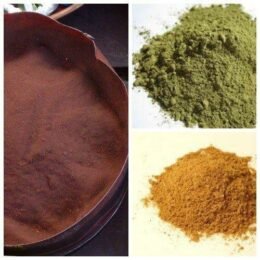
Source: Pinterest
Benefits of making Holi colours at home
There are several advantages of using home-made colours to play Holi. These include:
- Safety Assurance: Homemade Holi colours are often made from natural ingredients, reducing the risk of harmful chemicals or toxins that may be present in commercial colours. This ensures the safety of both the users and the environment.
- Customisation: Making Holi colours at home allows for customisation according to personal preferences. You can experiment with different ingredients and proportions to create unique colours and shades that reflect your creativity.
- Cost-effectiveness: Homemade Holi colours are usually more cost-effective compared to store-bought ones. By using readily available ingredients from your kitchen or local market, you can save money while enjoying the festive spirit.
- Eco-friendly: Commercial Holi colours often contain synthetic dyes and chemicals that are harmful to the environment. Homemade colours, on the other hand, can be made using natural ingredients that are biodegradable and eco-friendly, reducing pollution and environmental impact.
- Health benefits: Natural ingredients used in homemade Holi colours, such as turmeric, beetroot, and flower petals, may have health benefits for the skin and hair. These colours are less likely to cause skin irritation or allergic reactions, making them suitable for people with sensitive skin.
Housing.com POV
Celebrating Holi with homemade colours not only adds vibrancy to the festivities but also ensures safety, customisation, cost-effectiveness, eco-friendliness and potential health benefits. By utilising natural ingredients found at home or in local markets, individuals can create a memorable and enjoyable Holi experience while minimising environmental impact and safeguarding their well-being. Embracing the tradition of making Holi colours at home encapsulates the essence of the festival – joy, creativity, and unity.
FAQs
How to make yellow Holi colours at home with flowers?
To create wet colours, crush any yellow flowers, such as marigolds or yellow chrysanthemums, and mix them with water.
What are organic Holi colours made of?
Natural extracts create organic colours, readily available online or at home. They are mostly made of dried leaves, fruits, and flowers, making them safe for skin, health, and the environment. Many sorts of edible-grade substances are used to create various colours.
Are homemade Holi colours safe for the skin?
Yes, homemade Holi colours are generally safer for the skin compared to commercial colours as they are made from natural ingredients. However, it's essential to test the colours on a small patch of skin to ensure compatibility, especially for individuals with sensitive skin.
Can homemade Holi colours stain clothes?
While homemade Holi colours are less likely to stain clothes compared to synthetic colours, some ingredients may still leave temporary stains. It's advisable to wear old or dark-coloured clothes during Holi celebrations and to wash clothes promptly after exposure to colours to prevent staining.
How long do homemade Holi colours last?
The longevity of homemade Holi colours depends on the ingredients used and storage conditions. Dry powders made from natural ingredients like turmeric and flour can be stored for several months in airtight containers. However, liquid colours made from fresh ingredients like flowers or vegetables may spoil more quickly and should be used within a few days.
Can homemade Holi colours be used for children?
Yes, homemade Holi colours are generally safe for children, especially those made from edible ingredients like flour, turmeric and food colouring. However, adult supervision is recommended during use to prevent ingestion or contact with sensitive areas like the eyes.
Are there any alternatives to store-bought colours for Holi celebrations?
Yes, besides homemade colours, there are several alternatives to store-bought colours for Holi celebrations. These include using natural substances like flower petals, herbal powders and coloured water made from food colouring. Additionally, playing with water guns, balloons and water sprinklers can add fun and colour to the festivities without the use of traditional Holi powders.

Dhwani is a content management expert with over five years of professional experience. She has authored articles spanning diverse domains, including real estate, finance, business, health, taxation, education and more. Holding a Bachelor’s degree in Journalism and Mass Communication, Dhwani’s interests encompass reading and travelling. She is dedicated to staying updated on the latest real estate advancements in India.
Email: [email protected]
